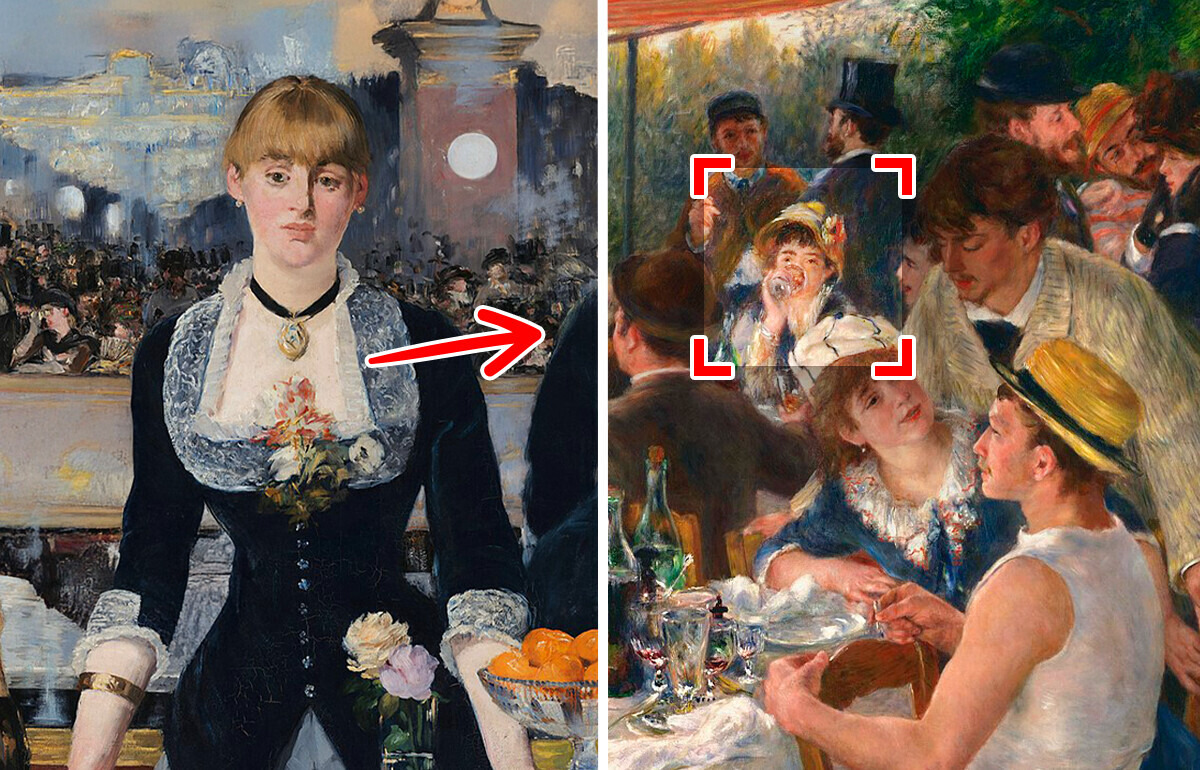My DIL Charges Me for Toilet Paper When I Babysit—in My Son’s House


Modern art often transforms the mundane into the extraordinary, unveiling the unseen narratives of daily existence. Through subtle symbolism, innovative techniques, and poignant compositions, contemporary artworks have captured the complexities of human experience. Below, we delve into 9 masterpieces that offer profound insights into the hidden layers of daily life in modern painting.
Édouard Manet’s final major work, A Bar at the Folies-Bergère, captures a barmaid standing behind a bar, but something is unsettling about her reflection in the mirror. While she looks directly at the viewer with a blank expression, the mirror shows a different, busier scene. This contrast hints at themes of inner conflict and isolation amidst public life.
The painting invites us to question what’s real and what’s illusion. Manet’s choice to paint such a busy scene with a solitary figure suggests that, even in the midst of a bustling city, people can feel completely alone. This painting still speaks to us today because it questions the roles we are forced to play in modern life.
In Paris Street; Rainy Day, Gustave Caillebotte captures a moment in Parisian life as people walk along a wide, rainy street. The artist masterfully conveys a rainy atmosphere without a single drop of rain being depicted.
The clean, geometric lines of the street and buildings emphasize how much the city was changing. The figures seem to move along in a world that’s both orderly and fleeting, highlighting the rapid transformation of Paris under Napoleon III’s ambitious redesign.
The absence of visible rain emphasizes the transient nature of the moment. Caillebotte’s meticulous attention to detail and use of perspective invite viewers to pause and reflect on the subtle beauty found in everyday scenes.
Nighthawks is one of Hopper’s most famous works, depicting a late-night diner with a few solitary people sitting at the counter. The diner’s harsh lighting contrasts with the dark, empty street outside, suggesting a sense of loneliness and isolation.
The figures inside seem lost in their own thoughts, adding to the feeling that even in a city full of people, you can still feel disconnected. Hopper’s decision to leave out a door in the diner makes us feel like we are peering in, as if we’re voyeurs of this quiet moment.
The diner could be seen as a metaphor for how people live in big cities: physically close but emotionally distant. Hopper’s scene captures the sense of loneliness that often accompanies urban life.
Seurat’s A Sunday Afternoon on the Island of La Grande Jatte shows Parisians enjoying a leisurely afternoon in the park, but it’s not just a typical scene. The dots that make up the image are a part of Seurat’s innovative technique called pointillism, where tiny strokes of color blend together from a distance.
This method gives the scene a harmonious, almost dreamlike quality. The people in the painting seem still, as if frozen in time, and there’s a sense of perfection in the way everything is organized. This calm and controlled depiction of everyday life reflects the orderliness of the bourgeois class during that period.
Despite the peaceful exterior, there’s a hint of distance between the people in the painting. The structured, almost mechanical appearance of the scene contrasts with the natural spontaneity we might expect from such a carefree moment, reminding us that life, even in its most peaceful forms, is often governed by rules and structure.
In The Little One Is Dreaming, Etude Gauguin depicts a sleeping child surrounded by whimsical symbols, like birds, which represent the child’s dreams. The dreamlike quality of the painting blurs the line between reality and imagination, inviting us into the subconscious world of the child.
Gauguin’s use of bold colors and symbolic elements makes this painting feel like a journey into the child’s inner world, where dreams and reality are intertwined. The wallpaper in the background, decorated with bird motifs, adds another layer of symbolism.
The birds may represent freedom, or perhaps the idea of the child’s dreams taking flight. Gauguin’s work encourages us to think about childhood as a time of innocence and wonder, where the boundary between waking life and dreams is fluid and full of meaning.
John Singer Sargent’s Portrait of Madame X is a striking depiction of Virginie Amélie Avegno Gautreau, a socialite renowned for her beauty and elegance. Initially, the painting featured a provocative detail: one of her dress straps was depicted as falling off her shoulder, which was considered scandalous by 19th-century standards.
This daring pose challenged traditional notions of modesty and portraiture, focusing on the sensuality of the human form. But the portrait’s controversy was not just about the subject’s pose but also about the tension between public image and private identity.
Sargent’s decision to depict Madame X in such an intimate, almost vulnerable pose was daring for its time, challenging societal norms. The painting’s scandalous reception reflects the tensions between individual expression and the rigid expectations of 19th-century society.
In The Dance Class, Degas offers a behind-the-scenes glimpse into a ballet rehearsal, capturing the discipline and grace of the dancers. The scene is filled with movement and energy, yet there’s a sense of order and structure, reflecting the rigorous training of the dancers.
Degas’s unique perspective, often from above or the side, adds a dynamic quality to the composition, immersing the viewer in the world of the ballet studio.
The painting also highlights the role of the ballet master as an authoritative figure guiding the dancers. This inclusion emphasizes the hierarchical nature of the dance world and the dedication required to master the art form.
Pierre-Auguste Renoir’s Luncheon of the Boating Party is often seen as a joyful glimpse of friends enjoying a riverside afternoon, but when you look closer, a more modern, restless mood begins to surface. The painting is full of people, yet few truly connect. Most gaze away, caught in their own thoughts or distracted by something just out of frame. Who is looking at whom becomes a quiet puzzle, with glances that miss, overlap, or lead nowhere.
At the center sits Ellen Andrée, surrounded yet unmistakably apart. Her eyes don’t meet anyone else’s—not even the viewer’s. She seems to gaze out of the canvas, detached and elusive, as if already elsewhere in her mind.
This quiet sense of disconnection reflects a deeper truth about modern life. Renoir captures not just leisure, but the subtle loneliness that can exist beneath it—showing how, even in the middle of a crowd, we can still feel alone.
Van Gogh’s Bedroom in Arles presents a serene and intimate portrayal of his personal space in Arles, reflecting his desire for tranquility and stability. The bold colors and simple furnishings convey a sense of comfort, offering insight into the artist’s state of mind during a period of emotional turmoil.
The tilted perspective and vibrant hues create a dreamlike atmosphere, blurring the lines between reality and perception. The painting’s simplicity and symmetry suggest a longing for order and peace amidst the chaos of Van Gogh’s life.
Each object in the room appears carefully chosen, contributing to the overall sense of harmony. By focusing on this personal space, Van Gogh invites viewers into his world, sharing a moment of introspection and vulnerability.
The visual narrative found in everyday objects in art is a key element in understanding how artists have infused the ordinary with meaning. These iconic works of modern art reveal the hidden layers of everyday life, offering insights into human experience, urban change, and personal reflection. To explore more, check this article.











